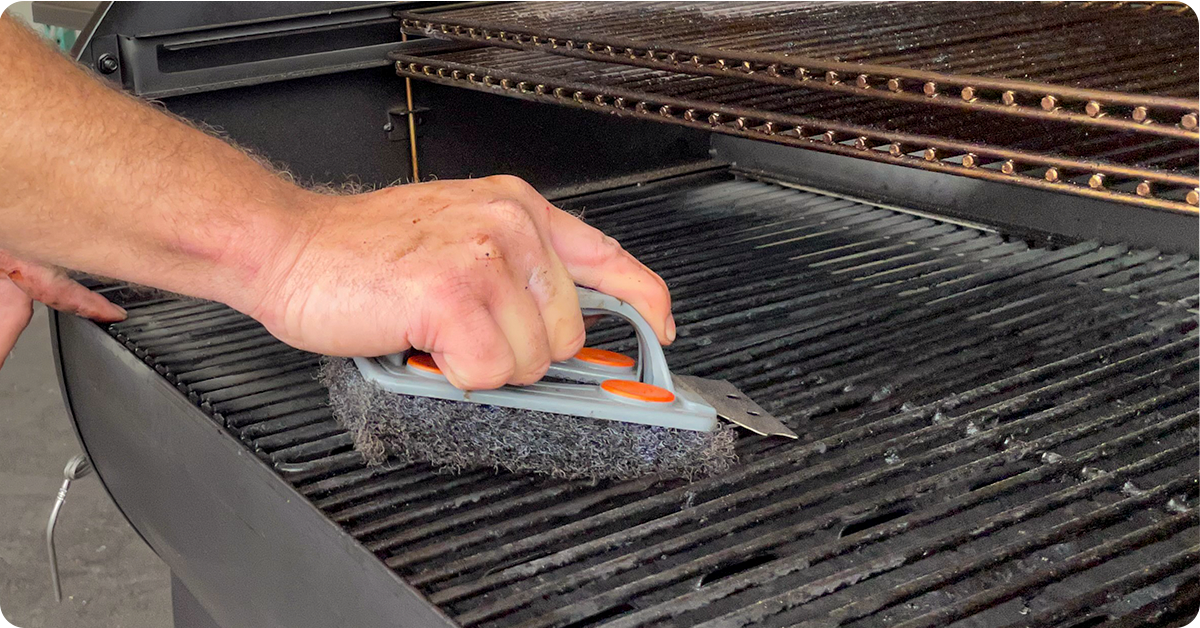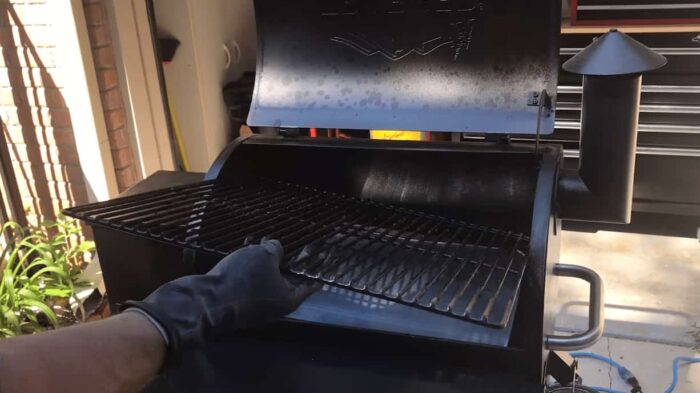Why Is My Traeger Leaking Grease: Traeger grills may leak grease due to factors such as overflowing grease buckets, clogged grease channels, damaged drip trays, or high cooking temperatures.
Understanding the Grease Management System
Traeger grills are equipped with a grease management system designed to collect and channel grease away from the cooking area. This system typically consists of a drip tray, grease bucket, and heat deflector. The grease generated during cooking is channeled into the drip tray and eventually collected in the grease bucket. Understanding how this system works is essential for identifying the causes of grease leaks.
Common Causes of Grease Leaks
Several factors can contribute to grease leaks on your Traeger grill. Some common causes include:
- Overflowing Grease Bucket: If the grease bucket is overfilled or not properly positioned, excess grease can leak from the grill.
- Clogged Grease Channel: A clogged or obstructed grease channel can prevent the smooth flow of grease into the bucket, leading to leakage.
- Damaged Drip Tray: A damaged or misaligned drip tray may not properly collect the grease, causing it to leak from the grill.
- High Cooking Temperatures: Excessive heat can cause grease to melt and drip down, bypassing the grease management system.

Inspecting and Cleaning the Grease Management System
To inspect and clean the grease management system of your Traeger grill, start by removing the drip tray, grease bucket, and heat deflector. Clean them thoroughly, removing any accumulated grease or debris. Inspect the grease channel for clogs or obstructions, using a pipe cleaner if necessary to clear them. Check for any damage or misalignment of the drip tray, and replace or repair any faulty parts. Regular cleaning and maintenance of the grease management system will ensure its optimal performance and prevent grease leaks.
Adjusting Temperature and Cooking Techniques
Adjusting temperature and using appropriate cooking techniques can play a significant role in minimizing grease leaks from your Traeger grill. Here are some tips to consider:
- Preheating: Ensure that you preheat your grill adequately before cooking. Preheating allows the heat deflector to warm up, which helps prevent grease from dripping prematurely. It also ensures a consistent cooking temperature throughout the grilling process.
- Temperature Control: Avoid using excessively high temperatures when grilling. Higher temperatures can cause grease to melt and drip down, bypassing the grease management system. Opt for lower and more moderate cooking temperatures to minimize the likelihood of grease leaks.
- Indirect Cooking: Consider utilizing indirect cooking methods whenever possible. Indirect cooking involves placing the food away from the direct heat source, such as using the grill’s convection setting or setting up a two-zone cooking setup. This technique reduces the chances of grease buildup and potential leaks since the food is not directly exposed to the flames.
- Grease Trays and Pans: Use grease trays and pans strategically to catch any drippings during the cooking process. Place them strategically under the food or close to the heat source to minimize grease buildup in other areas. Regularly clean and empty these trays to maintain their effectiveness.
- Avoid Flare-Ups: Flare-ups can occur when fat or grease drips onto the hot flames, causing sudden bursts of intense heat. These flare-ups can lead to excessive grease production and leaks. To prevent flare-ups, trim excess fat from meat before grilling, avoid using marinades or sauces that are high in fat content, and keep a close eye on your grill while cooking.
By adjusting the temperature, utilizing indirect cooking methods, using grease trays strategically, and preventing flare-ups, you can significantly reduce the likelihood of grease leaks from your Traeger grill. Experiment with different cooking techniques to find the optimal settings that work best for your grilling needs while maintaining a clean and efficient grease management system.
Proper Pellet Selection and Quality
Proper pellet selection and ensuring their quality is crucial in minimizing grease leaks from your Traeger grill. Choose high-quality wood pellets that have been properly stored to avoid excessive ash and grease production. Opt for pellets made from 100% pure hardwood without additives or fillers, as these can contribute to increased grease production. Additionally, ensure that the pellets are dry and have a low moisture content to prevent excess smoke and grease. By selecting the right pellets and maintaining their quality, you can enhance your grilling experience and reduce the chances of grease leaks.
Maintenance and Regular Check-ups
Regular maintenance and check-ups are essential for preventing grease leaks and ensuring the optimal performance of your Traeger grill. Conduct routine inspections to identify any signs of wear and tear, loose fittings, or damaged components. Keep the grill clean and free of debris, as built-up residue can impede the grease management system’s efficiency. Regularly clean and maintain the drip tray, grease bucket, and heat deflector. By performing regular check-ups and maintenance tasks, you can address any issues promptly, maintain the proper functioning of the grease management system, and minimize the risk of grease leaks during your grilling sessions.

Why is my Traeger grill dripping grease?
When your Traeger grill is dripping grease, it is usually due to one or more factors:
- Firstly, an overflowing grease bucket can lead to grease leakage. Make sure the bucket is properly positioned and not overfilled.
- Secondly, a clogged grease channel can obstruct the smooth flow of grease into the bucket, causing it to leak. Clean the channel regularly to prevent clogs.
- Thirdly, a damaged or misaligned drip tray can fail to collect grease effectively, resulting in leaks. Inspect the drip tray for any signs of damage and ensure proper alignment.
- Lastly, high cooking temperatures can cause grease to melt and bypass the grease management system, leading to drips.
How do you get grease out of the inside of a Traeger grill?
To remove grease from the inside of your Traeger grill, follow these steps. Start by ensuring the grill is cool and turned off. Remove the grates and any other removable components. Use a grill brush or scraper to loosen and remove any excess grease or residue from the interior surfaces. Wipe down the surfaces with a damp cloth or sponge and a mild cleaning solution. Avoid using harsh chemicals that may damage the grill’s components. Rinse thoroughly and allow the grill to air dry before reassembling. Regular cleaning and maintenance will help prevent grease buildup and potential leaks.

What is a grease trap on Traeger?
A grease trap on a Traeger grill is an essential component of the grease management system. It is designed to collect and channel grease away from the cooking area. The grease trap typically consists of a drip tray positioned under the cooking grates and a grease bucket connected to the tray. During cooking, the grease drips into the tray and flows into the bucket, keeping the cooking area clean and reducing the risk of grease fires. Regularly emptying and maintaining the grease trap ensures its proper functioning and helps prevent grease leaks.
How do I reset my Traeger grease trap?
To reset your Traeger grease trap, follow these steps. Start by ensuring the grill is turned off and cool. Remove the grease bucket and empty it if necessary. Clean the grease tray and inspect it for any damage or misalignment. Reinstall the clean grease tray, making sure it is properly positioned. Place the grease bucket back in its designated spot, ensuring a secure connection. Double-check that all components are in place and securely fastened. Your Traeger grease trap should now be reset and ready for use. Remember to perform regular maintenance and cleaning to keep the grease trap functioning effectively.
How to Clean Your Grill & Pellet Grill Maintenance | Traeger Grills
FAQs
Conclusion
Grease leaks from your Traeger grill can be resolved with proper maintenance, regular cleaning, and correct usage techniques. By understanding the grease management system, inspecting and cleaning components, adjusting cooking techniques and temperature, using quality pellets, and ensuring regular maintenance, you can prevent and resolve grease leaks effectively. Remember to prioritize safety and address any persistent issues promptly to continue enjoying the delicious results that Traeger grills offer.
Are you really enjoying different types of dishes and love to make tours several times? Grilling something is the core of enjoyment if you make fun with friends & family.
However Hungry Grills is most trustable yet in shares knowledge about Grills and its related chop chop job & making loyal reviewed to readers.
-Mitchel Shawn